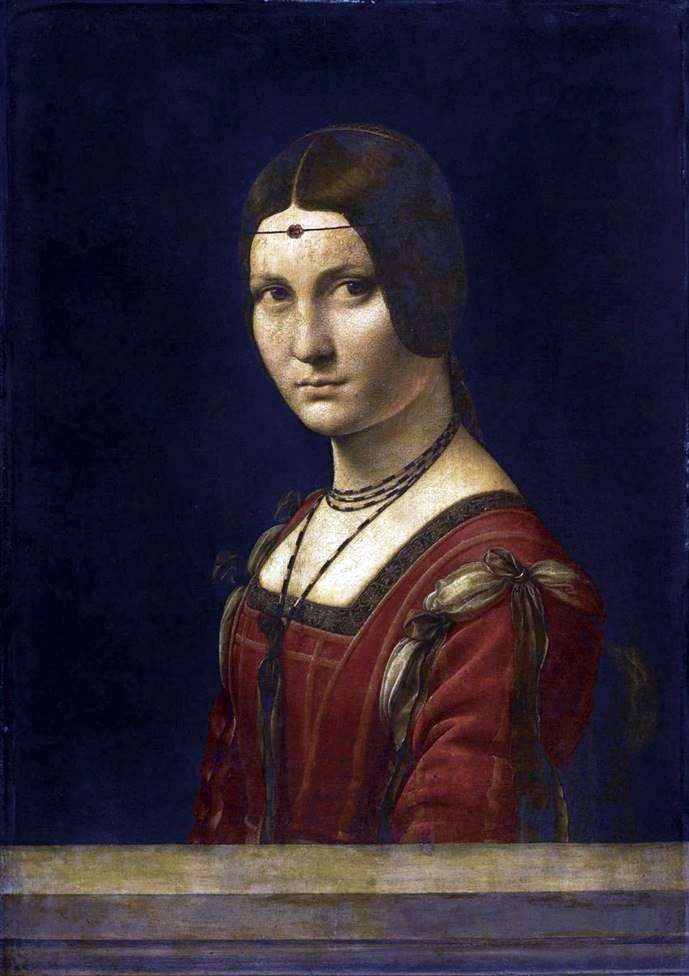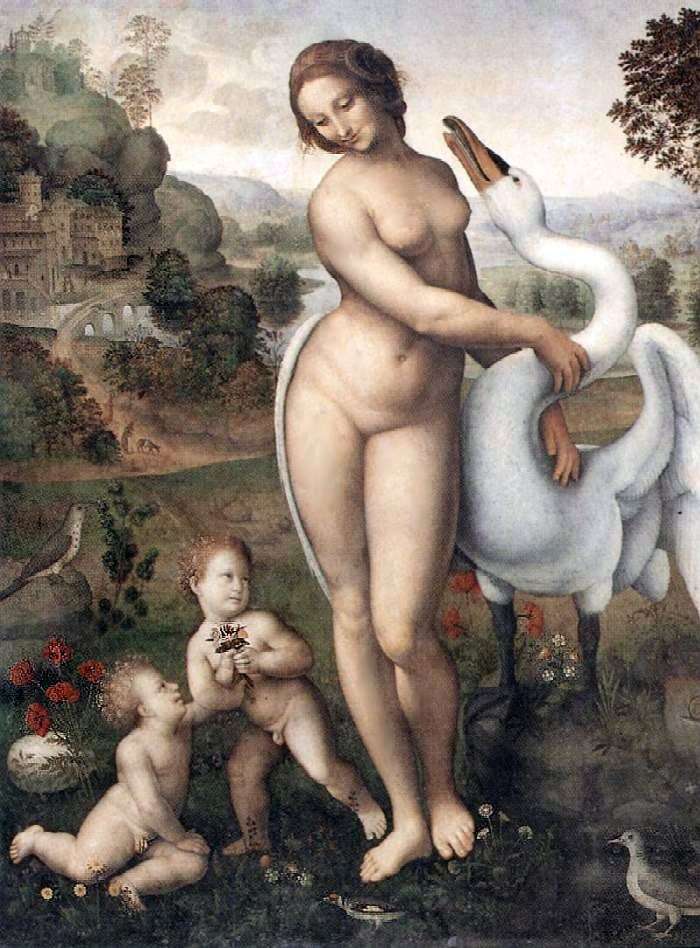
This picture is one of four famous female portraits belonging to the brush of Leonardo. She has a very fascinating history and many-valued symbolism, typical of most of the images of da Vinci. Even if one does not delve into the numerous theories about the belonging of the Titan of the Renaissance to a variety of secret societies, the picture itself gives a large number of references to various associations and word games.
This canvas has suffered quite a lot from numerous restorations and repairs. After conducting modern research methods it was discovered that under the present image there are a few more, belonging to the brush of Leonardo. Among them there is an option where the ermine is not in the picture at all, and such, where instead of the animal in the hands of the lady is some smaller gray animal. Also, there are facts confirming that the original background of the picture was blue, and then the image of the door or window behind the left shoulder of the female figure disappeared from it.
Presumably, the painting depicts one of the mistresses of the Duke of Sforza Cecilia Gallerani, but there is no exact documentary evidence of this fact. An indirect argument is considered to be a play of words in the name of the beast and the name of the heroine of the portrait, as well as in the coincidence of the heraldic symbol on the Sforza coat of arms with the ermine on the hands of the lady. However, there is no evidence that the picture is really made of ermine, and not marten, white ferret, or even “flea-fur” – a scarecrow designed to protect her mistress from attacking insects.
This picture is one of the most beautiful female portraits. Characteristic for Leonardo turn of the head in three quarters allows viewers to admire the exceptional beauty of the lady’s face. She is dressed in the fashion accepted at that time – a cap made of transparent fabric on her forehead is picked up by a special ornament – ferroniera, dark hair is passed under the chin, smoothly combed and creates a kind of frame for a gentle face with soft features. On the lady is a fashionable dress with a large square decollete and split multi-layered sleeves. A double string of black pearls adorns the neck and a beautiful smooth line of shoulders.
A special feature of the portrait is the image of the hands. For artists this has always been considered a great challenge, but Leonardo with his vast knowledge of anatomy masterfully mastered such work. The hands of Cecilia impress with their subtlety and grace. The gesture with which she touches the fur coat of the animal is refined and extraordinarily sensual. The animal, from the pleasure of the mistress’s touch, like a domestic cat, paws and releases sharp claws.
The composition of the picture is also unusual. The turn of the head and the direction of the views of both the woman and the animal make it possible to imagine that at the time the picture was created their attention was distracted by something that was on their side. This technique creates the illusion of an accurate, almost photographic impression of the moment. Color painting, as always with Leonardo, is rich and nobly restrained. However, numerous records do not allow to fully appreciate the original intent of the creator.
 Beautiful Ferronera by Leonardo Da Vinci
Beautiful Ferronera by Leonardo Da Vinci Ginevra Benci by Leonardo da Vinci
Ginevra Benci by Leonardo da Vinci Portrait of Beatrice d’Este by Leonardo da Vinci
Portrait of Beatrice d’Este by Leonardo da Vinci Mona Lisa or Gioconda by Leonardo Da Vinci
Mona Lisa or Gioconda by Leonardo Da Vinci Leda and the Swan by Leonardo da Vinci
Leda and the Swan by Leonardo da Vinci Self Portrait by Leonardo Da Vinci
Self Portrait by Leonardo Da Vinci Annunciation by Leonardo Da Vinci
Annunciation by Leonardo Da Vinci Self-portrait by Leonardo Da Vinci
Self-portrait by Leonardo Da Vinci